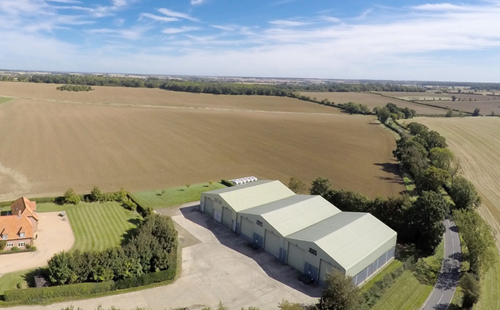
Excuse the play on words but it must appear to many that the Guardian article on the launch of Nattergal’s first venture (the rewilding business that emerged from Knepp Estate) at Boothby Lodge Farm in Lincolnshire did nothing to ease the controversy that this project has created.
The Guardian article is unhelpful as in order to make its point and promote rewilding it criticises the approach to land management of the previous owners and managers without acknowledging the structural and policy shifts in agricultural practice that have happened since the second world war or recognising any biodiversity gains that were produced (more on this below). For an explanation of what is envisaged at Boothby I refer you to Nattergal’s own website. Nowhere does this suggest that it is a nature depleted site ripe for recovery. It merely puts forward a more extensive, low input approach to managing the land where the majority of the income will be derived from natural capital, tourism and agri-environment scheme support rather than from food production.
As our recent blogs have suggested there is a role for rewilding within our landscape – in some areas this could include a withdrawal from commercial farming activities – and, given we are largely a society of private landownership, we respect everyone’s right to manage their land as they wish.
However, what the Guardian article does highlight is the potential for a disconnect between our biodiversity and environmental ambitions, which rewilding seems to embody at the moment, and our desire for domestic food production in the face of increasing global food insecurity. In a recent blog we reviewed the discussion at our last APPG on this very subject. At our APPG we were able to demonstrate that food security, nature recovery and other environmental gains are possible from our countryside – you just need the right people in the right place at the right time to come up with the right answers.
But this aside it is wrong to criticise previous land managers without recognising that agricultural policy for many years has promoted food production – at the expense of biodiversity as we now know. Consequently, it is possible that Government grants paid for actions to increase production such as the removal of hedgerows (which ironically are not due to be replaced). It is only in the last 30 years or so that agri-environment schemes have been widely available, and even more recently natural capital-based funding options such as carbon and biodiversity credits which arguably make rewilding schemes an attractive investment option.
I looked back at the sale particulars for the farm. The farm had been in an ELS/HLS scheme until December 2021 (all the land was in a surface water NVZ) and had employed methods that promoted “exceptional soil husbandry” including testing the soils every 4 years to allow for variable nutrient application rates across the farm. The rotation consisted of winter oil seed rape, spring barley, winter wheat (1st and 2nd year), temporary grass and extensive over winter fallow, sometimes interspersed with linseed and beans. There was also a farm shoot let on a licence which is likely to account for the “strategically placed woodland” including coppice and covers. So far there is nothing to suggest that this land was a desert for wildlife; just profitably farmed given the grade and heavy nature of the land, with the difficult to farm areas set aside for nature. Whilst this approach to land use may not be what the rewilders think is good practice, the previous owners clearly were interested in the overall stewardship of the land.
It will be interesting to have sight of the ecological survey of the farm at the commencement of the rewilding project – and that in 10-15 years time. I have no doubt that there will be increases in some species and habitat types, but this may be at the detriment of others such as ground nesting birds that are supported by combinable crop-based rotations and helped by game management. The key message here is that it is important to have a balanced perspective on different land uses and their contribution to public goods and services (including food production and security) and not to see one as superior to another. This just results in policy pursuing a single objective which is no different from that single objective being food; it is a case of ‘and’ not ‘or’. However, we would argue that rewilding is best done in patches across a farm providing connectivity and habitat continuity rather than focussing on individual farms which can become isolated within the broader landscape.